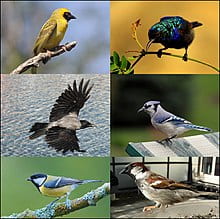 Wren or nuthatch? Red-bellied woodpecker or Northern flicker? Turkey or buzzard? Birders—those who watch birds as a hobby—may scoff at these examples. They know to look at the beak, the coloring, the shape of the wings in flight. They know which birds are migrating when and where to find them. And their phones are loaded with apps for easy reference of anything they can’t call on the wing. It’s no surprise to birders that their passion is the most popular pastime in the United States.
Wren or nuthatch? Red-bellied woodpecker or Northern flicker? Turkey or buzzard? Birders—those who watch birds as a hobby—may scoff at these examples. They know to look at the beak, the coloring, the shape of the wings in flight. They know which birds are migrating when and where to find them. And their phones are loaded with apps for easy reference of anything they can’t call on the wing. It’s no surprise to birders that their passion is the most popular pastime in the United States.
It may also be no surprise that birds are “the most studied group out there,” as Andrew Mack, grants and contracts coordinator at Penn State Altoona, biologist, and birder, says, and that research has a value far beyond pleasant recreation. Mack has contributed to a recent study at LSU that identifies and charts passerines, the largest order of birds (over half of all birds and the one that includes songbirds). in a study funded by the National Science Foundation, researchers used 221 bird specimens collected from 48 countries to create a “tree of life”; the results have been published as Oliveros et al., “Earth History and the Passerine Superradiation,” by the OpenWings Project., which is dedicated to “reconstructing the evolutionary history of all bird species.”
As always, the question is: why is this important? Birds are a vital part of our lives—not just as song or adornment or food, but as part of our ecosystem as insect eaters and pollinators. But scientists have given us some very bad news recently when it comes to birds. According to an article in the journal Science, the bird population in North America has “a net loss approaching 3 billion birds, or 29% of 1970 abundance.” We need to be aware of such changes because, Mack says, “if we don’t know what’s in our world, how do we know what we’re losing?”
While research has resulted in an increased number of families within the passerines, from 46 to 137, that increase is not about “new” birds but instead is due to “a better understanding of the relationship among bird species,” Mack says. Studying the DNA of the samples helped the researchers see how different birds are related to each other. “We’re getting a much better handle on that,” Mack says. “There’s a lot more diversity than we realized. What might have looked like two different species might in fact be two different families, each with multiple species within the family.” This is the case, he says, “especially in New Guinea where I have worked the most. A number of taxa there we placed as species within other families are now elevated to family status.”
Museums do more than display items for the public’s view. They also acquire and preserve collections, which researchers can then utilize. For this project, museums played a significant role by providing a lot of the specimens that were studied. Mack, who served as the William and Ingrid Rea Conservation Biologist (Senior Scientist) at the Carnegie Museum of Natural History for five years, recognizes the role museums have in making this and other research possible: “A lot of this work would not happen without them.”
—Therese Boyd, ’79

